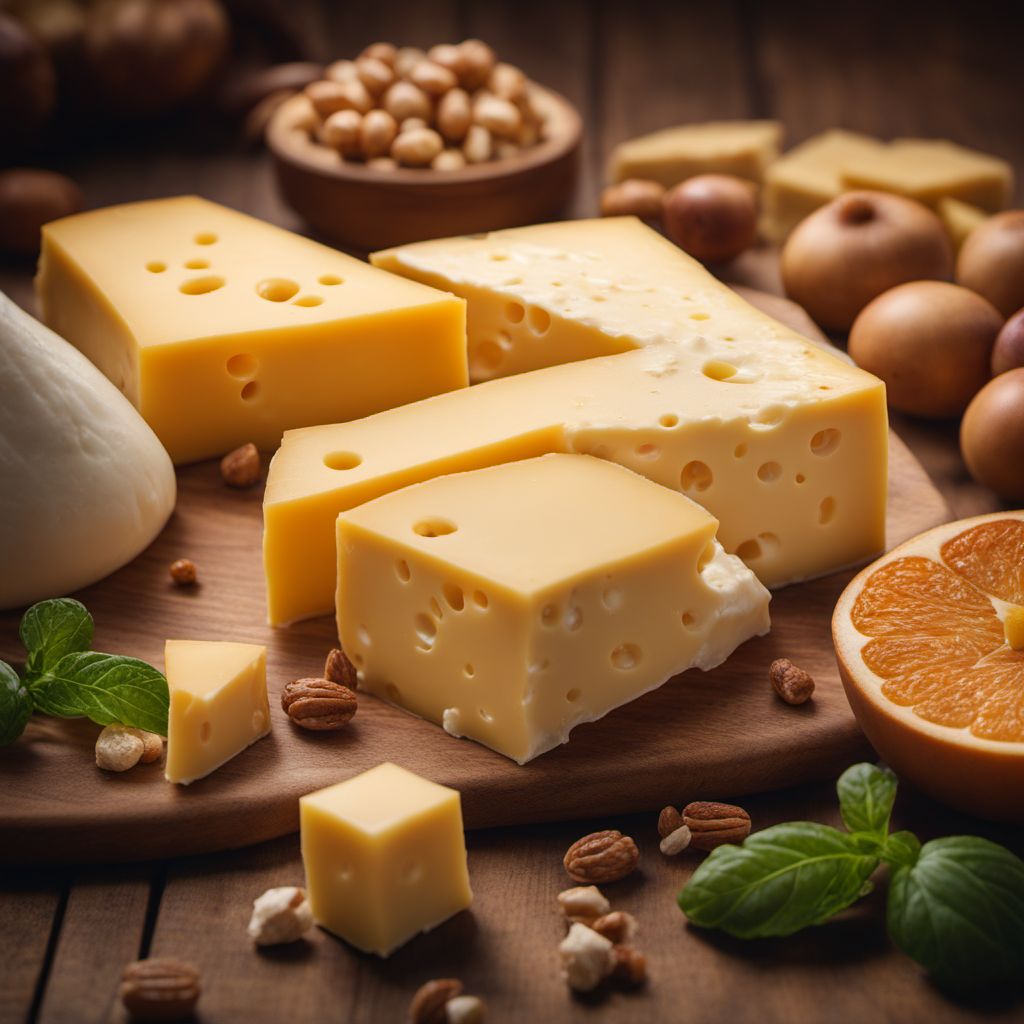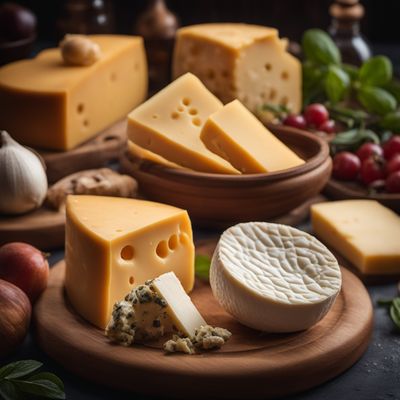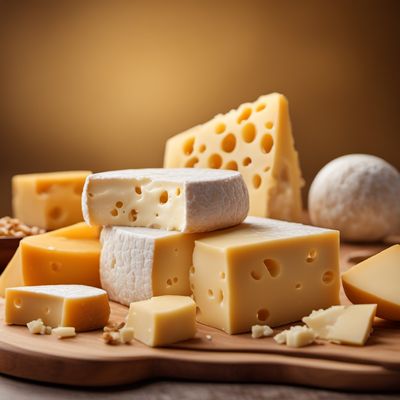
Ingredient
Cheese, appenzeller
The Swiss Delight: Appenzeller Cheese
Appenzeller cheese is a semi-hard cheese with a pale yellow color and a smooth, firm texture. It is made from cow's milk and has a distinct aroma. The cheese has a rich and nutty flavor with a hint of sweetness, which intensifies as it ages. Its texture is smooth and slightly elastic, allowing it to melt beautifully when heated. The cheese is often characterized by its small, round holes, known as "eyes," which are formed during the aging process. Overall, Appenzeller cheese is a versatile ingredient that adds depth and complexity to a wide range of dishes.
Origins and history
Appenzeller cheese originates from the Appenzell region in northeastern Switzerland. It has a long history dating back to the 13th century when it was first produced by monks in local monasteries. Over the centuries, the cheese-making techniques have been passed down through generations, preserving the traditional methods and ensuring the cheese's exceptional quality. Today, Appenzeller cheese is still produced in the Appenzell region, following strict regulations to maintain its authenticity and unique characteristics.
Nutritional information
Appenzeller cheese is a good source of protein and calcium. It also contains essential vitamins such as vitamin A and vitamin B12. A 1-ounce (28g) serving of Appenzeller cheese provides approximately 110 calories.
Allergens
Appenzeller cheese contains milk and is not suitable for individuals with lactose intolerance or milk allergies.
How to select
When selecting Appenzeller cheese, look for a cheese that has a smooth and firm texture without any cracks or mold. The color should be a pale yellow, and it should have a pleasant aroma. Opt for cheese that has been aged for at least three months for a more pronounced flavor.
Storage recommendations
To maintain the freshness and quality of Appenzeller cheese, it should be stored in the refrigerator. Wrap it tightly in wax paper or aluminum foil to prevent it from drying out. It is important to keep the cheese away from strong-smelling foods as it can absorb odors easily. Properly stored, Appenzeller cheese can last for several weeks.
How to produce
Appenzeller cheese production requires specialized knowledge and equipment. It is best left to professional cheese makers who follow traditional methods and adhere to strict quality standards.
Preparation tips
Appenzeller cheese is incredibly versatile and can be enjoyed in various ways. It is excellent for melting, making it perfect for fondues, gratins, and sandwiches. It can also be grated and used as a topping for pasta dishes or salads. For a simple and delicious snack, pair Appenzeller cheese with crusty bread, fruits, or nuts. When cooking with Appenzeller cheese, it is best to add it towards the end of the cooking process to preserve its flavor and texture.
Substitutions
Gruyère cheese or Emmental cheese can be used as substitutes for Appenzeller cheese, as they share similar nutty flavors and melting properties.
Culinary uses
Appenzeller cheese is commonly used in Swiss cuisine, particularly in dishes like raclette and fondue. It is also a popular choice for sandwiches, quiches, and gratins. The cheese's rich and nutty flavor pairs well with fruits, nuts, and cured meats, making it a delightful addition to cheese boards and charcuterie platters.
Availability
Appenzeller cheese is primarily available in Switzerland, particularly in the Appenzell region. However, it can also be found in specialty cheese shops and gourmet markets worldwide.
More ingredients from this category » Browse all

Cheese, cheshire
The Quintessential British Cheese: Exploring the Delights of Cheshire Cheese

Cheese, lancashire
The Creamy Delight

Cheese, cream havarti
The Creamy Delight: Havarti Cheese

Cheese, white stilton
The Creamy Delight

Cheese, nisa
The Hidden Gem of Cheeses: Nisa, a Delightful Culinary Treasure

Cheese, caerphilly
Caerphilly Cheese: A Creamy Delight from Wales

Cheese, wensleydale
The Creamy Delight: Exploring the World of Wensleydale Cheese

Cheese, ibores
The Fiery Delight: Exploring the Bold Flavors of Ibores Cheese

Cheese, leicester
The Bold and Tangy Delight: Unveiling the Secrets of Leicester Cheese

Cheese, kurpianka smoked
Smokey Delight

Cheese, ossau-iraty
The Aged Delight: Ossau-Iraty Cheese

Cheese, raschera
The Creamy Delight: Unveiling the Secrets of Raschera Cheese